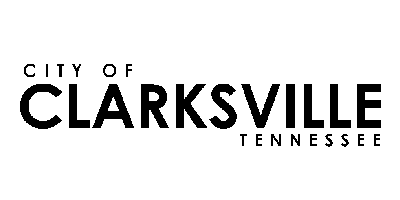-
Description
-
GENERAL STATEMENT OF JOB This is the third of five levels in the Equipment Maintenance series. Incumbents analyze, inspect, test, maintain and repair a variety of vehicles and equipment. Responsibilities may include maintaining and repairing brake, engine, electrical, fuel, hydraulic, transmission, ignition, exhaust, axle assemblies, air conditioning, and related systems; performing minor body repair; changing and repairing tires; aiding disabled vehicles; and maintaining maintenance and repair records.
***PLEASE NOTE: THIS POSITION WILL REMAIN OPEN THROUGH JANUARY 14, 2025, OR UNTIL FILLED.***
-
Example of Duties
-
SPECIFIC DUTIES AND RESPONSIBILITIES
Essential Functions:
Troubleshoots, diagnoses, and performs complex, skilled repairs and/or overhauls to vehicles and equipment in assigned area of responsibility, including inspecting, and replacing of broken or worn parts. Diagnoses, repairs, cleans, adjusts, and installs fuel, ignition, electrical and cooling systems involving repair and replacement of applicable parts which, depending on assignment, may include carburetors, fuel pumps, starter motors, distributors, generators/alternators, voltage regulators, wiring, switches, hoses, batteries, radiators, thermostats, and water pumps. Performs preventative maintenance and servicing activities which, depending on assignment, may include changing oil; changing filters; applying lubricants; checking fluid levels; inspecting brakes, chassis components, and tires; and performing related activities. Answers service and breakdown calls; conducts on-site repairs when possible; operates wrecker to return broken down vehicles and equipment to the shop. Completes a variety of logs, documents, and/or simple reports regarding quantity of materials handled, equipment operations, vehicle conditions, maintenance, and repair activities, and/or related information. Keeps shop and assigned work area clean and organized; disposes of unusable replacement parts; and disposes of used motor oil, transmission fluid, and antifreeze. Performs other duties of a similar nature or level. Performs other related work as required.
-
Typical Qualifications
-
MINIMUM EDUCATION AND TRAINING
Education and Experience
High school diploma or GED equivalent. One (1) year experience in mechanical maintenance and repair. An equivalent combination of education and experience sufficient to perform the job's essential duties.
License and Certifications
-
Supplemental Information
-
MINIMUM QUALIFICATIONS AND STANDARDS REQUIRED
Knowledge, Skills, and Abilities: Knowledge of:
Skilled vehicle and/or equipment maintenance and repair practices and procedures in assigned area of responsibility. Applicable tools and equipment. Diagnostic devices utilized in identifying vehicle and/or equipment malfunctions. Occupational hazards and safety precautions. Recordkeeping principles. Computers and related software applications.
Skill in:
Using applicable tools and equipment. Maintaining and repairing vehicles and equipment. Detecting and diagnosing vehicle and equipment malfunctions. Maintaining operational records and reports. Using a computer and related software applications. Communication, interpersonal skills as applied to interaction with subordinates, coworkers, supervisor, the public, etc. sufficient to exchange or convey information and to receive work direction.
Physical Requirements: The work is very heavy work which requires exerting in excess of 100 pounds of force occasionally and/or in excess of 50 pounds of force frequently, and/or in excess of 20 pounds of force constantly to move objects. Additionally, the following physical abilities are required:
Balancing: Maintaining body equilibrium to prevent falling while walking, standing, or crouching on narrow, slippery, or erratically moving surfaces. The amount of balancing exceeds that needed for ordinary locomotion and maintenance of body equilibrium. Climbing: Ascending or descending ladders, stairs, scaffolding, ramps, poles, and the like, using feet and legs and/or hands and arms. Body agility is emphasized. Crawling: Moving about on hands, knees, hands, and feet. Crouching: Bending the body downward and forward by bending leg and spine. Feeling: Perceiving attributes of objects, such as size, shape, temperature, or texture by touching with skin, particularly that of fingertips. Fingering: Picking, pinching, typing, or otherwise working, primarily with fingers rather than with the whole hand as in handling. Grasping: Applying pressure to an object with the fingers and palm. Hearing: Perceiving the nature of sounds at normal speaking levels with or without correction. Ability to receive detailed information through oral communication, and to make the discrimination sound. Kneeling: Bending legs at knee to come to a rest on knee or knees. Lifting: Raising objects from a lower to a higher position or moving objects horizontally from position-to-position. It occurs to a considerable degree and requires substantial use of upper extremities and back muscles. Mental Acuity: Making rational decisions through sound logic and deductive processes. Pulling: Using upper extremities to exert force to draw, haul or tug objects in a sustained motion. Pushing: Using upper extremities to press against something steady to thrust forward, downward, or outward. Reaching: Extending hand(s) and arm(s) in any direction. Repetitive Motion: Substantial movements (motions) of the wrist, hands, and/or fingers. Speaking: Expressing or exchanging ideas by means of the spoken word including the ability to convey detailed or important spoken instructions to other workers accurately and concisely. Standing: Particularly for sustained periods of time. Stooping: Bending body downward and forward by bending spine at the waist. It occurs to a considerable degree and requires full motion of the lower extremities and back muscles. Talking: Expressing or exchanging ideas by means of the spoken word including those activities in which they must convey detailed or important spoken instructions to other workers accurately, loudly, or quickly. Visual ability 1: sufficient to perform an activity like preparing and analyzing data and figures; transcribing; viewing a computer terminal; and/or extensive reading. Walking: Moving about on foot to accomplish tasks, particularly for long distances or move from one work site to another.
|
 City of Clarksville
City of Clarksville $54,964.00 - $82,446.00 Annually
$54,964.00 - $82,446.00 Annually
 please see the city of clarksville's benefits page for applicable benefits information.
please see the city of clarksville's benefits page for applicable benefits information.

 Jan 07, 2025
Jan 07, 2025 

